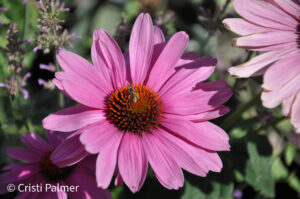Plant Information

Echinacea is a genus of about 10 perennial species, commonly known as coneflowers, in the Asteraceae family. They are native to eastern and central North America where they naturally grow in open woodlands and prairies. The genus name comes from the Greek ekhinos, meaning hedgehog, likely referring to the spiny central disk of the flower.
In addition to this spiny disk, coneflowers can be identified by their daisy-like flowers petals that come in purple, pink, white, orange, or yellow. These flowers usually bloom throughout the summer into early autumn and can grow as tall as 2 to 4 feet. Their beautiful blooms attract bees, butterflies, and hummingbirds, making them a great choice for any garden.
Coneflowers can be planted in USDA zones 3 – 9 and should be planted in full sunlight. They require regular water when growing, but are low maintenance once established and can even be tolerant of drought. For the best results, they should be grown in well-drained moist loam, but they are adaptable to various soil types and pH levels.
Historically coneflowers have been used for medicinal purposes as they are thought to boost the immune system and treat colds and the flu. Native Americans used Echinacea angustifolia and E. purpurea to treat many different problems including insect bites, burns, wounds, throat and tooth infections, coughs, and stomach cramps. Echinacea were also given to cows and horses when they were not eating well. However, modern research has provided little evidence that Echinacea products are medicinally effective.
Economics
According to the USDA NASS Census of Horticulture, coneflowers sold for a value of $9.6 million in 2014 and $7.6 million in 2019.
Main Diseases Problems
Coneflowers are susceptible to various bacterial and fungal diseases including bacterial leaf spot, powdery mildew, Botrytis blight, and aster yellows.
Main Pest Problems
Coneflowers are targeted by aphids, spider mites, and Japanese beetles.
IR-4 Research
IR-4 has conducted 18 crop safety trials on Echinacea purpurea to determine if certain pesticide products cause any harm or leave unsightly residues.
Authors
Laura Werner, IR-4 Environmental Horticulture Program Research Assistant
